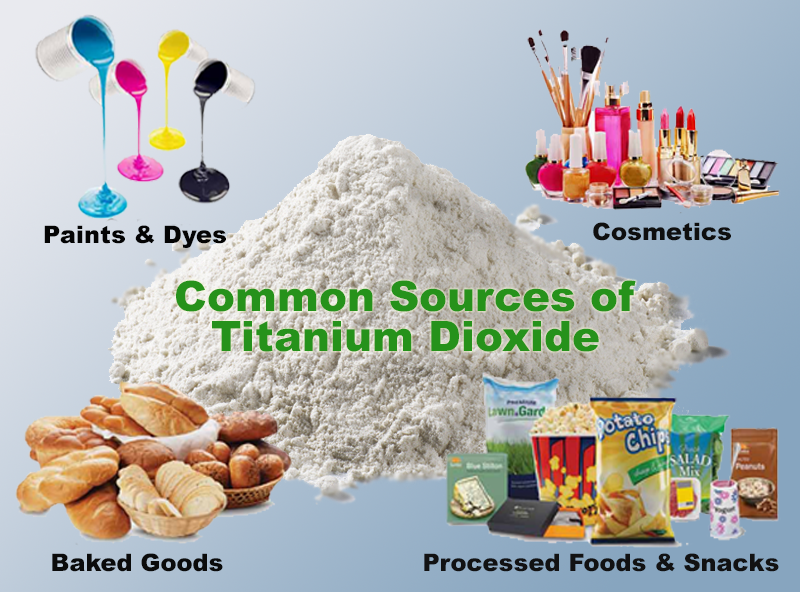 In a pilot study by a team of researchers at The University of Texas at Austin, crystalline particles of titanium dioxide – the most common white pigment in everyday products ranging from paint to candies – were found in pancreas tissues of people with Type 2 diabetes, suggesting that exposure to the white pigment is associated with the disease.
In a pilot study by a team of researchers at The University of Texas at Austin, crystalline particles of titanium dioxide – the most common white pigment in everyday products ranging from paint to candies – were found in pancreas tissues of people with Type 2 diabetes, suggesting that exposure to the white pigment is associated with the disease.
Titanium dioxide (TiO2) is not normally found in healthy human tissues. The human body teems with a wide variety of salts and compounds of metallic elements such as sodium, potassium, calcium, iron and magnesium, as well as lesser amounts of other metallic elements like cobalt or molybdenum, but not of titanium.
The researchers examined 11 pancreas specimens, eight of which were from donors who had Type 2 diabetes (T2D) and three from donors who did not. Whereas the pancreatic tissues of the three non-diabetic samples were completely free of titanium dioxide crystals, the scientists detected titanium dioxide crystals in all of the eight the pancreatic tissue specimens from diabetics. The researchers counted more than 200 million titanium dioxide crystals per gram in the specimens from T2D donors but none in the three non-diabetic donors. According to Adam Heller, leading team member and diabetes researcher.
“Our initial findings raise the possibility that Type 2 diabetes could be a chronic crystal-associated inflammatory disease of the pancreas, similar to chronic crystal-caused inflammatory diseases of the lung such as silicosis and asbestosis.”
In the mid-20th century, titanium dioxide pigment replaced highly toxic lead-based pigments, becoming the most commonly used white pigment in paints and in foods, medications, toothpaste, cosmetics, plastics and paper. As a result, annual production of titanium dioxide has increased by 4 million tons since the 1960s.
According to the World Health Organization, the number of people with diabetes has grown by 400% during the past four decades, affecting approximately 425 million people, with T2D comprising the majority of recorded cases. Although obesity and an aging population are still considered major factors leading to a rise in diabetes cases worldwide, Heller’s study suggests that increased use of titanium dioxide may also be linked to the rapid rise in the number of people suffering from the disease.
“The increased use of titanium dioxide over the last five decades could be a factor in the Type 2 diabetes epidemic,” Heller said. “The dominant T2D-associated pancreatic particles consist of TiO2 crystals, which are used as a colorant in foods, medications and indoor wall paint, and they are transported to the pancreas in the bloodstream. The study raises the possibility that humanity’s increasing use of TiO2 pigment accounts for part of the global increase in the incidence of T2D.”
Given the wide-reaching implications of his findings, Heller is keen to repeat the study with a larger sample. “We have already begun a broader study,” he said. “Our work isn’t over yet.”
>Source: Adam Heller, Karalee Jarvis, Sheryl S. Coffman. Association of Type 2 Diabetes with Submicron Titanium Dioxide Crystals in the Pancreas. Chemical Research in Toxicology, 2018; 31 (6): 506 DOI: 10.1021/acs.chemrestox.8b00047.












[…] Source […]